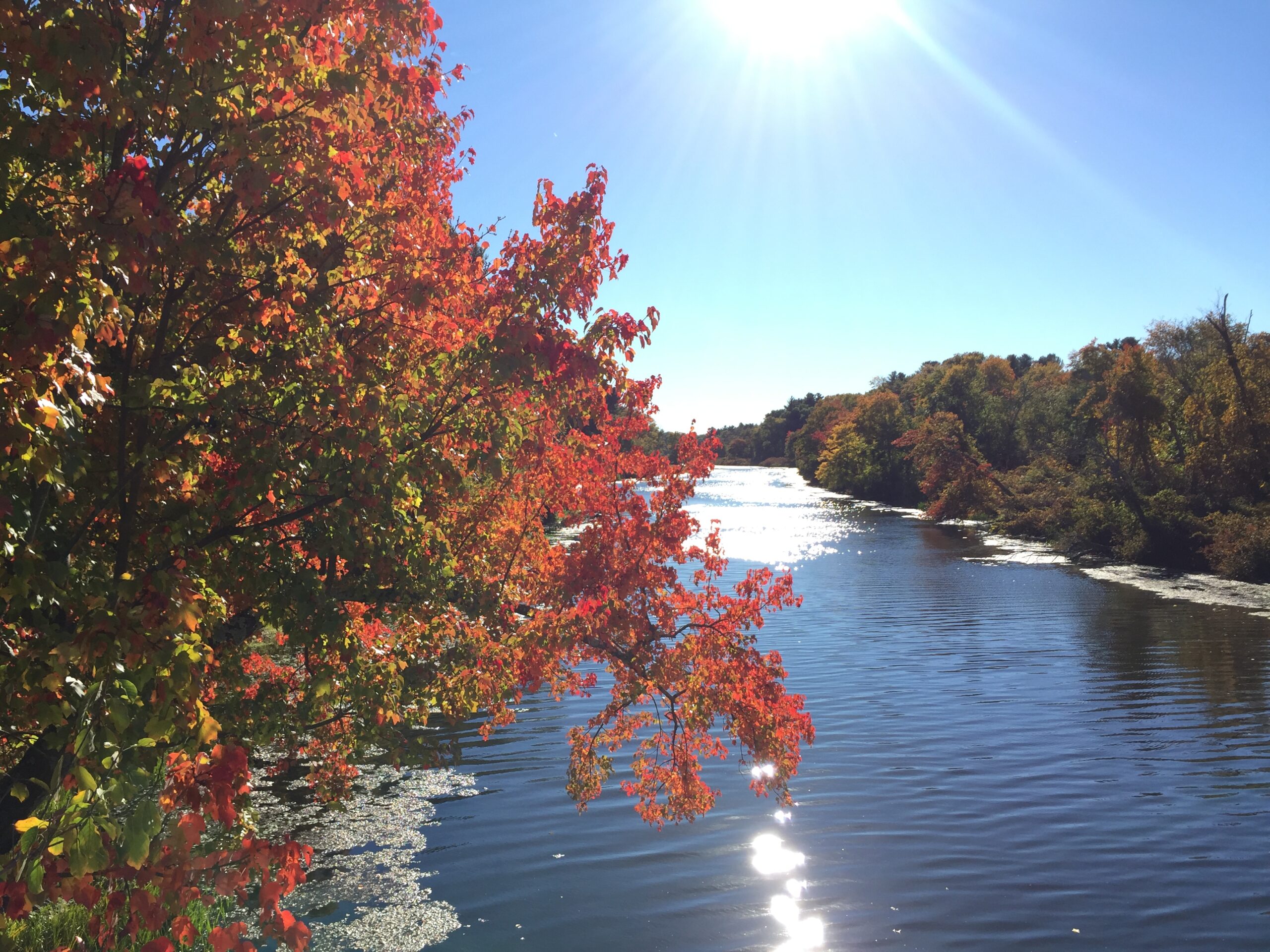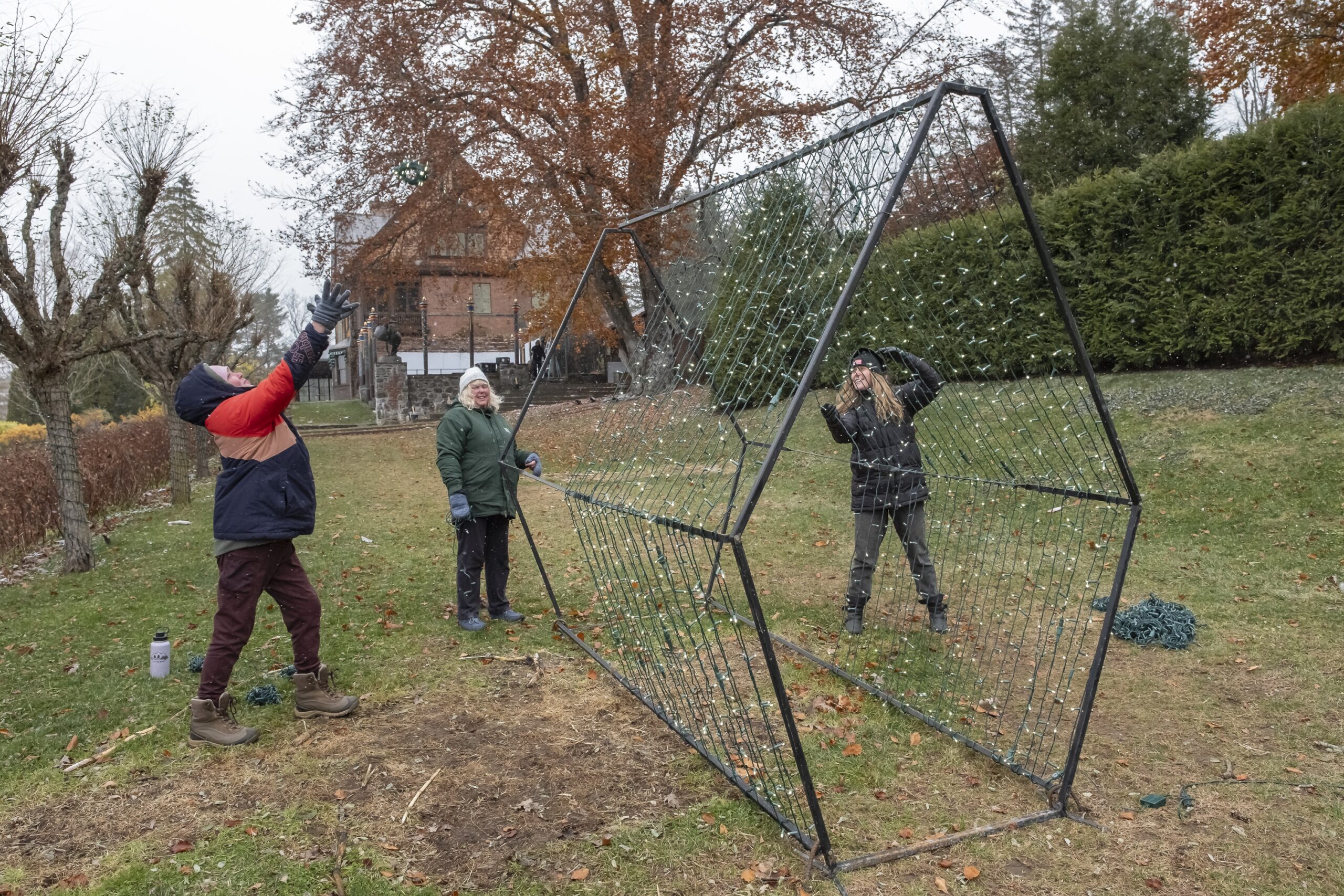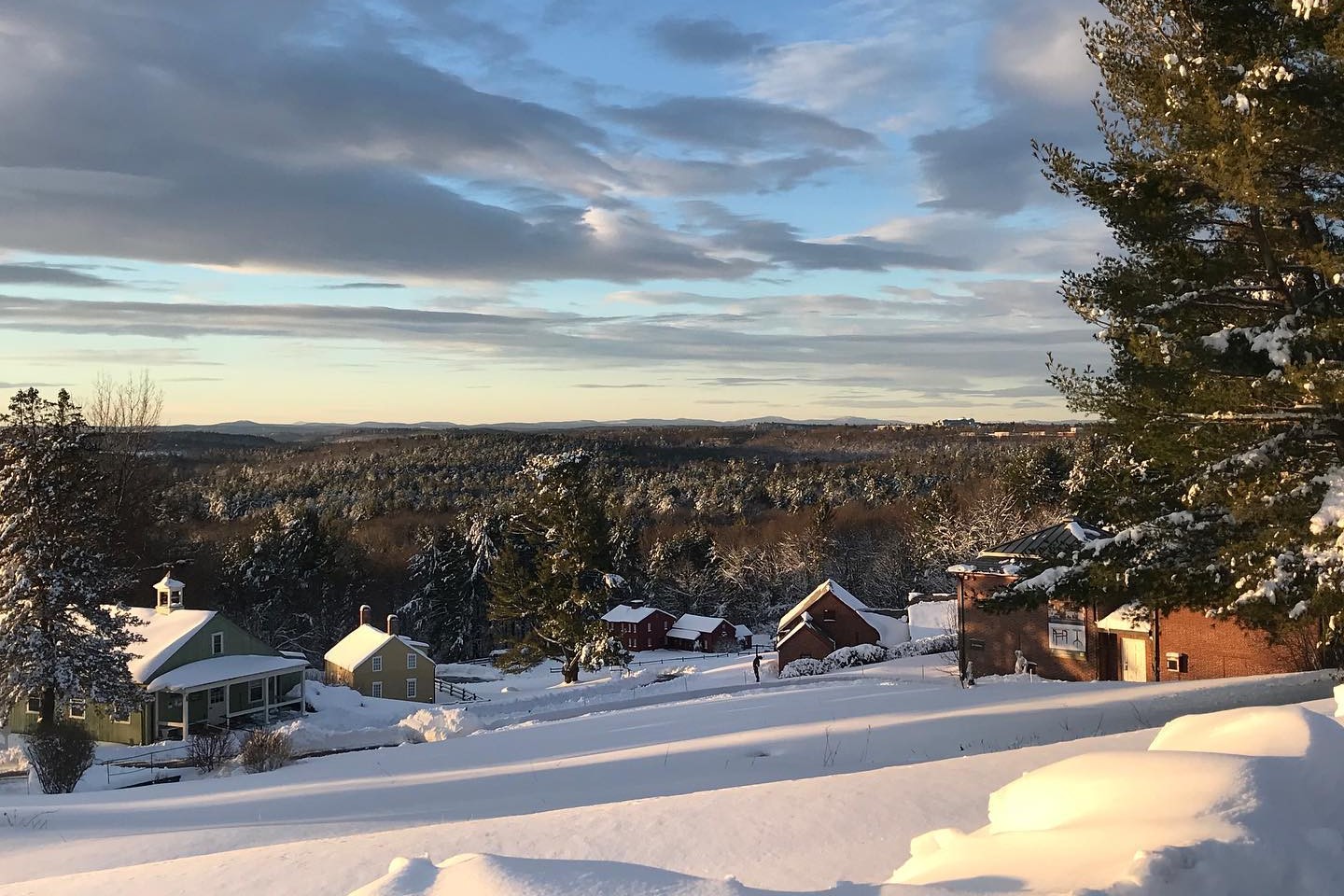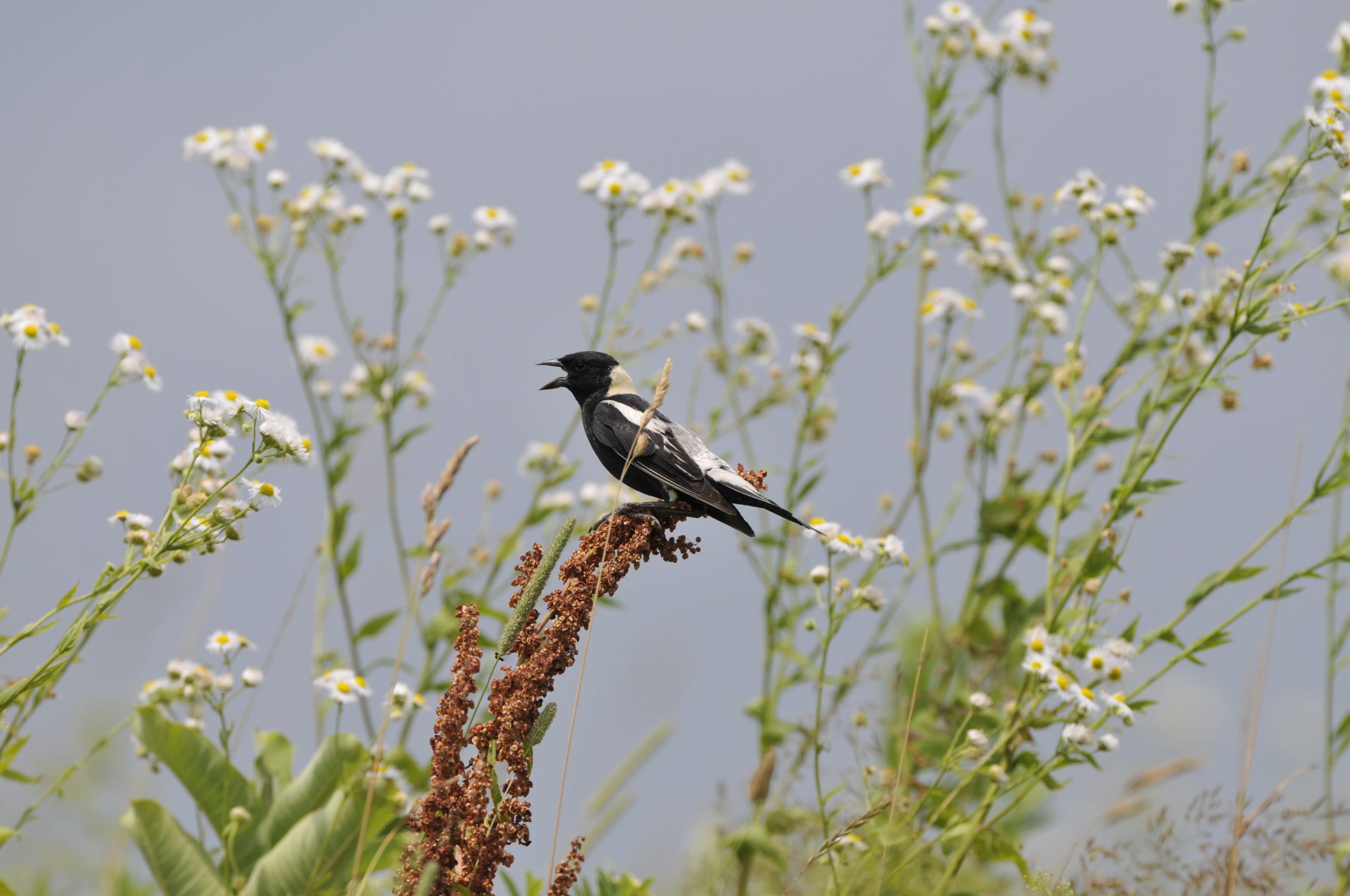
A bobolink bird perches on a long stalk of grass.
Each spring after traveling nearly 6,000 miles from their wintering grounds in South America, Bobolinks, a focal grassland bird species for the Trustees, arrive back at their nesting territories. The hayfields, pastures, and meadows at Appleton Farms in Ipswich are once again filled with their bobbling electronic song, breeding displays, and nest building activity.
One of the most iconic grassland birds, the bobolink is hard to miss. Males dress to impress in their summer breeding plumage. Many liken their white backs, black stomachs, and yellow nape to wearing a backward tuxedo. Females are more muted in color. Their pink bills, brown crown stripes, dusty yellow bellies, and dark brown streaked backs offer them the perfect camouflage with their grassy surroundings.
With Appleton Farms’ storied history and current ecological and agricultural activities, Jean Shin’s Art in the Landscape installation, Perch, brings this special species to the forefront for visitors, promoting community science, and understanding of a critical and special species that is facing decline.
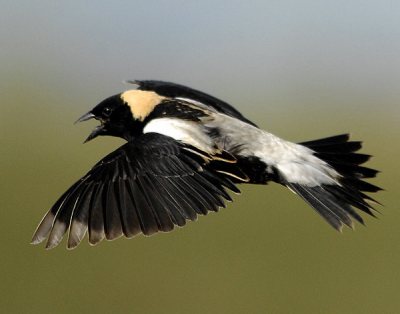
A male Bobolink
What are Bobolinks and Grassland Birds?
Bobolinks are one of 24 grassland obligate bird species in North America, meaning they are dependent on open fields, pastures, and grasslands that have wide open spaces free from trees and other obstructions. These birds rely on grassland habitat for survival, from feeding on insects and seeds to nesting on the ground in the cover of grasses. According to the “2022 State of the Birds Report” published by the North American Bird Conservation Initiative, grassland birds have experienced the largest bird declines of any terrestrial (land-based) biome. As a suite of species, they have experienced a 34% decline in population. Bobolinks individually have experienced population declines of over 60% within their North American breeding grounds, which range from New England, across the mid-west, and into southern Canada.
Declines in Bobolink and other grassland bird populations are largely fueled by habitat loss, fragmentation, and degradation. The U.S. was once home to a mosaic of grassland ecosystems stretching from the Rocky Mountains and Great Plains to the Gulf Coast. This expanse of grasslands provided habitat for grassland birds with diverse habitat requirements to flourish. Today, grasslands are the most endangered ecosystem in the U.S., with 60% of native grasslands converted or severely degraded. This large-scale loss of habitat, particularly in the west and mid-west, has put increasing importance on protecting and restoring the remaining grassland habitat here in New England. While we have examples of native grassland habitats such as sandplain grasslands, beaver meadows, and floodplains, most of our grassland habitat lies within the agricultural landscape.
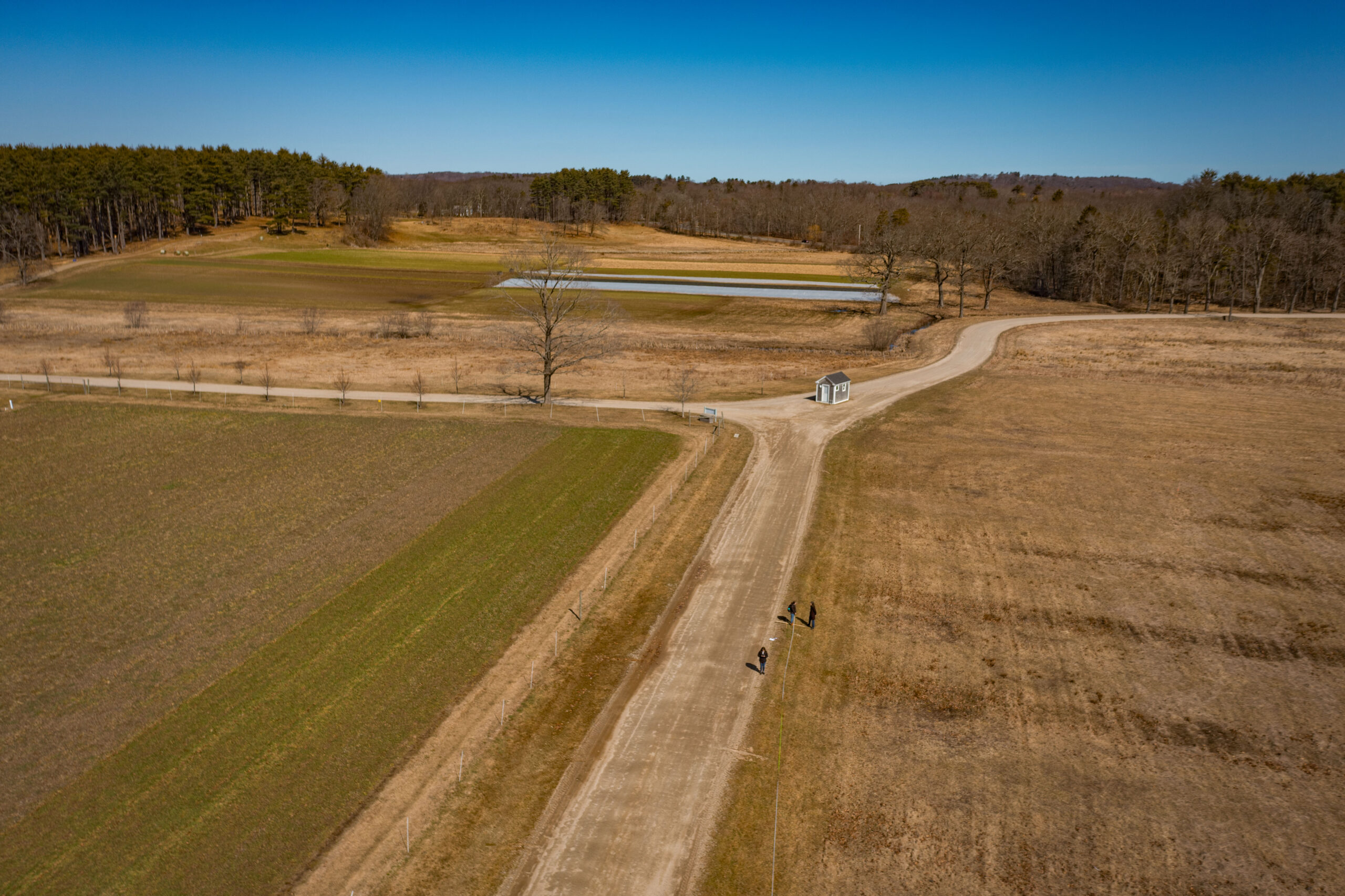
Aerial of Appleton Farms in March
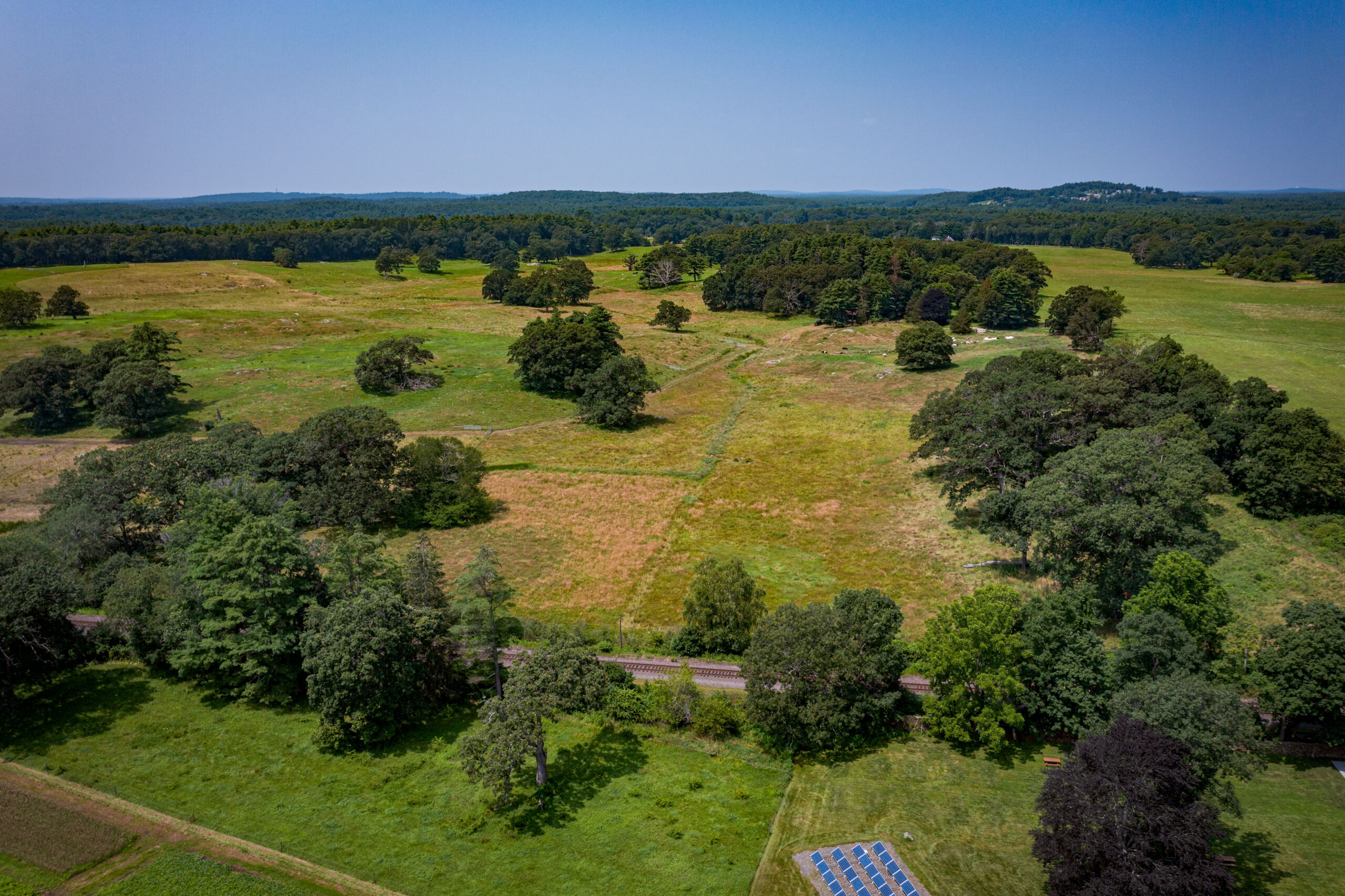
Aerial of Appleton Farms in July
Community Science & Grassland Bird Monitoring
In recognition of this grassland habitat loss and the subsequent declines in grassland bird populations, The Trustees seeks to manage the 2,000 acres of grassland across our properties to support native biodiversity, including grassland breeding birds. In 2010, we launched a grassland bird monitoring community science program. Now entering our 14th monitoring season, we have developed a dedicated group of 70 volunteers who document and survey Bobolinks and other grassland birds including Savannah Sparrows, Grasshopper Sparrows, and Eastern Meadowlarks.
The data collected by volunteers helps us assess populations of grassland birds within our fields and helps evaluate the success of management in supporting grassland bird nesting and overall habitat health. All grassland habitat requires active management such as mowing, haying, grazing livestock, or prescribed fire to remain open. Without active management, fields would swiftly revert to forests. However, the timing of management is crucial for grassland bird nesting success. Volunteer data, such as that collected at Appleton Farms, can help track the breeding season timeline and aids in informing where and when it is safe to mow or graze livestock.
At properties like Appleton, this data is especially important. Grassland birds and agriculture have a complex relationship and their needs are often seen as competing priorities. However, farms are crucial for supporting grassland birds. Volunteer monitoring combined with more intensive nest searching, conducted by trained staff in the Trustees agroecology program, allows us to design haying and rotational grazing management plans that support the livelihood of farming operations, while allowing threatened grassland birds to nest successfully. Appleton Farms had 638 bobolink sightings by our volunteer bird monitors in 2023.
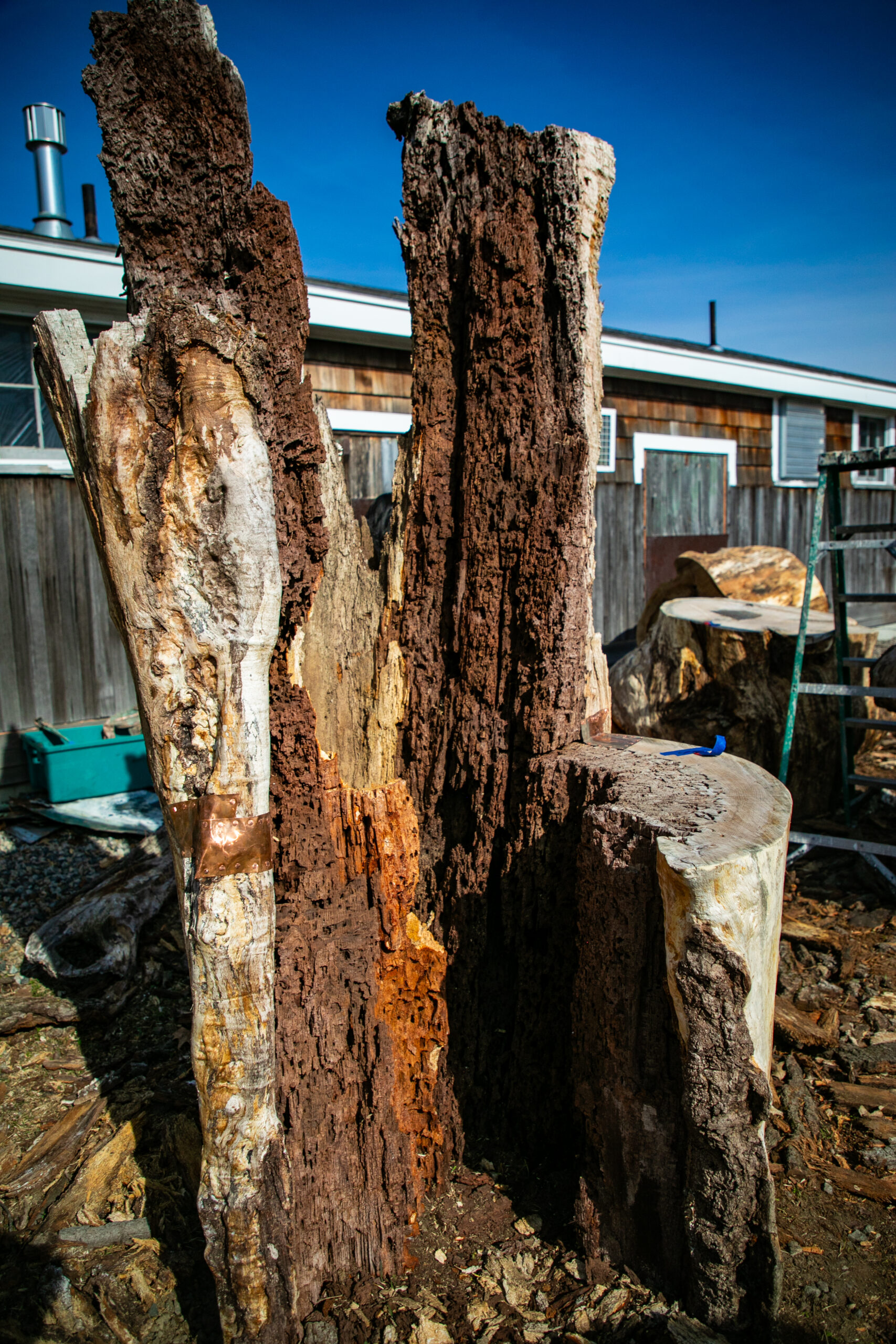
A tree remnant that will be used in the Perch installation
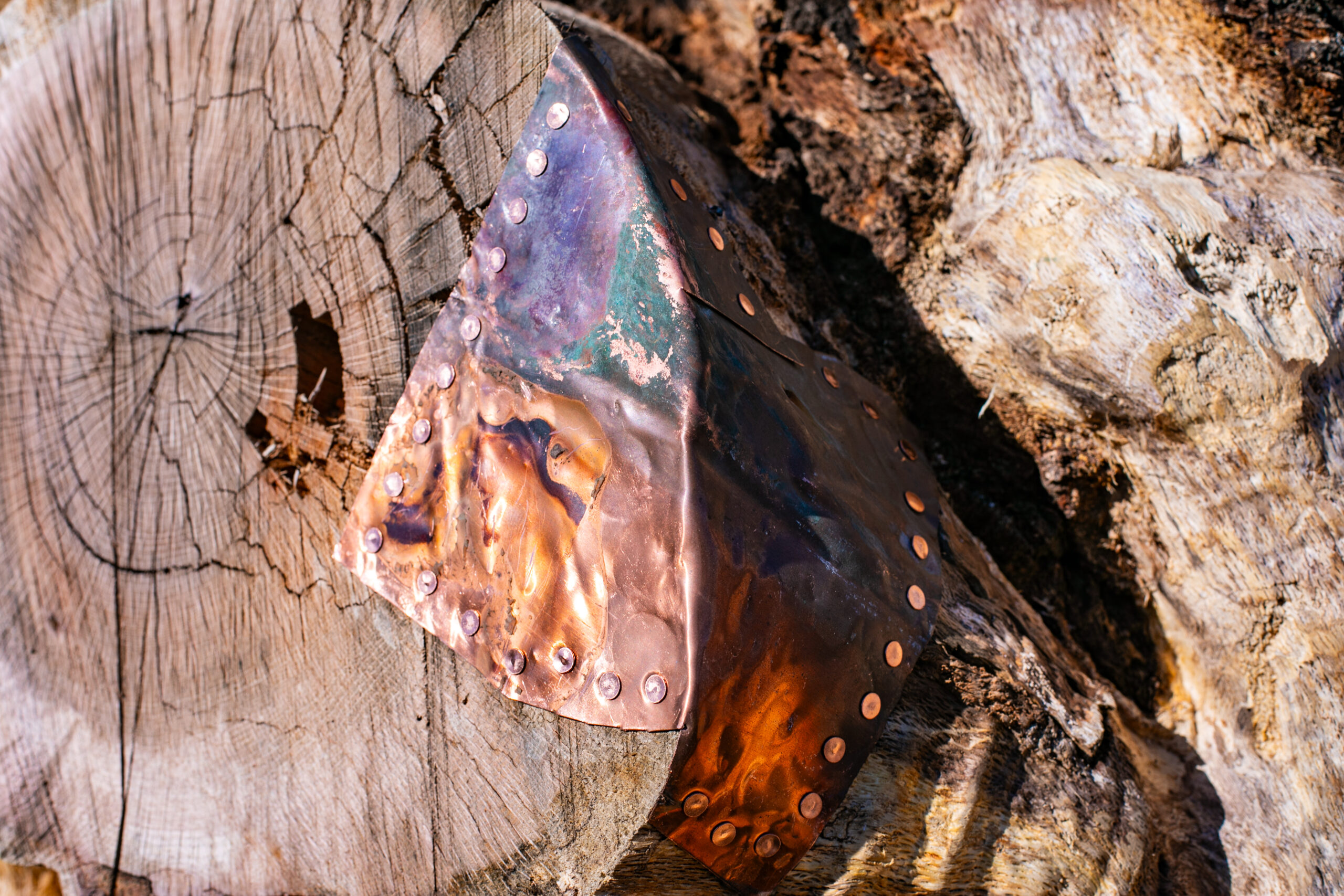
A stump covered in repurposed copper for Perch
Jean Shin’s Perch
Perch welcomes our visitors from the public to try their hand at this community science. Marking sites where the Trustees’ ecology team monitors the bobolink population, Jean Shin’s installation will create sculptural platforms made from fallen and dead trees found throughout Appleton that visitors can engage with, as they ultimately become participants in this critical monitoring throughout the project’s run. Within the nesting area, Shin will create sculptural perches made from fallen trees and salvaged copper in which male bobolinks can perch to search for mates and mark their territory.
Perch brings bobolinks and their conservation to the forefront while engaging visitors with our community science monitoring initiative. We look forward to diving further into Jean Shin’s Perch and enlightening visitors about the way we balance both agriculture and ecology priorities to support all aspects of the Trustees’ mission in our next blog.
To experience Perch yourself, we encourage you to take to the trails and join us at Appleton from April 22 – November 1, 2024.
